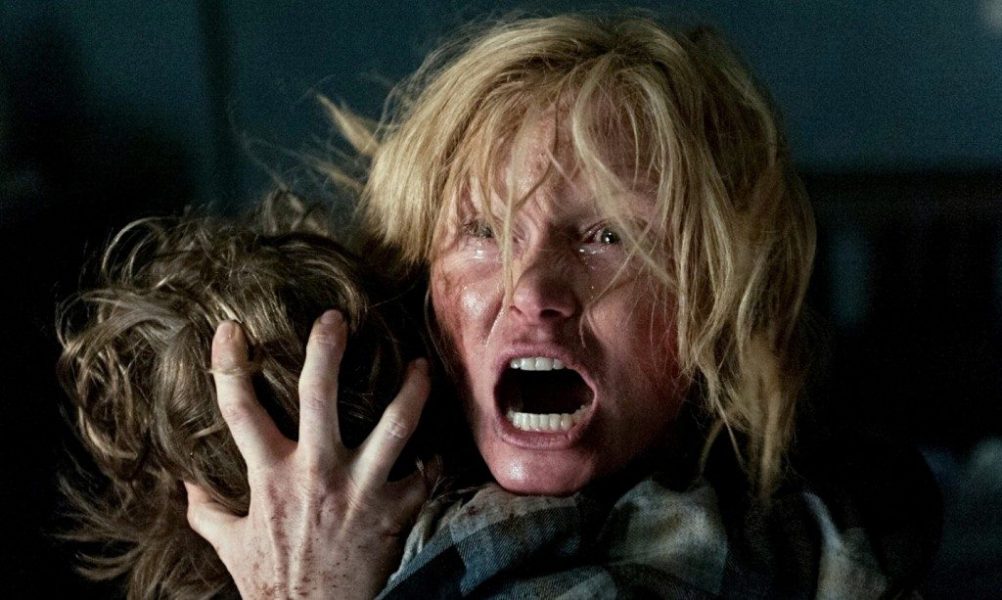‘The Babadook’ is the story of Amelia, a widowed woman who struggles with her six-year-old trouble-maker son, Sam. Initially, Amelia is inattentive to Sam’s theories of monsters. But, she soon realizes that there might be a monster in the closet, after all. If you haven’t seen ‘The Babadook’, I suggest you stop here, go watch the film, and come back to find out about the things that baffled you. And trust me, there are a lot of things you’d want to discuss after the film is over. There is a great deal of symbolism that appears throughout the movie.
It is difficult to make a horror film that can truly terrify the viewers. But, to create it in a way that makes the audience question its themes and underlying concepts is an art. This film explores that territory by investing heavily on the emotional elements. What makes it even better is that it walks a fine line between horror and psychological thriller. The filmmakers leave it to you to decide what genre you want to put it in.
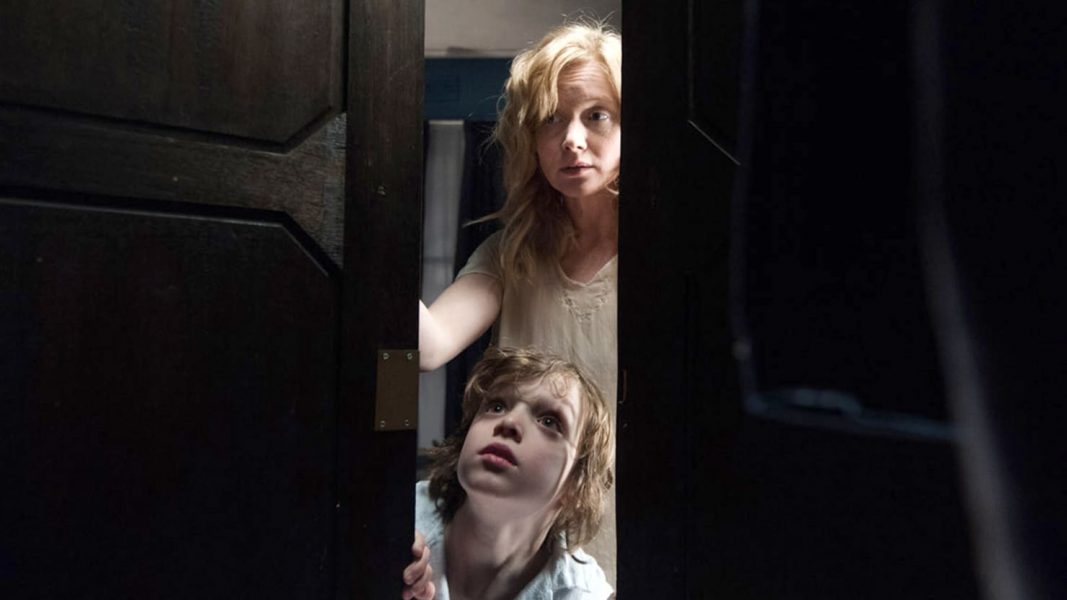
Through Amelia and Sam, ‘The Babadook’ provided a new definition to the love-hate relationship between a mother and her son. The societal norm dictates that a mother’s love is supposed to be unconditional. But it would be a lie if we said that our parents haven’t ever hated us, for one reason or another. The director, Jennifer Kent, explored this familiar, yet cinematically uncharted, aspect of a mother-son relationship. This forms one of the titular themes of the film and provides it with more depth and realism. The motivations of the characters are completely justified because of their intense and accurate portrayals.
While it is awesome to watch a film that puts your mind to work, it can also get confusing. Here I have tried to simplify things and explain exactly what is going on in ‘The Babadook’. Or what I think is going on, at least.
Who/What is Mister Babadook?
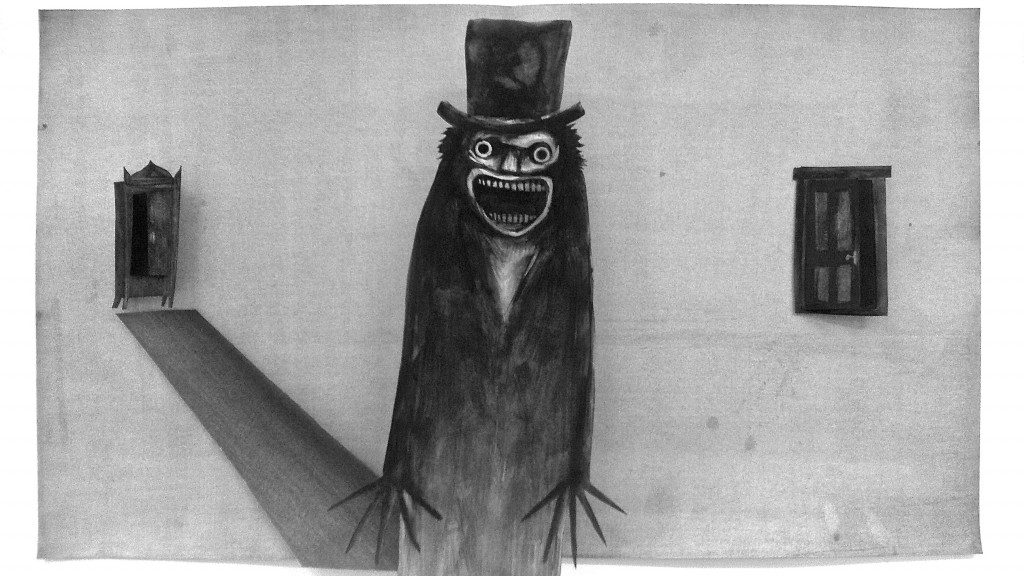
In an usual horror movie, there’d be no disputing that Mister Babadook is an actual ghost. But, this is a different case. There are a lot of theories and deductions about who the Babadook is, and what he represents. Before delving further into the topic, we must consider Amelia and Sam’s situation. It is evident that Amelia hasn’t recovered from her husband’s death. It has been seven years. Still, whenever someone talks about Oskar, she changes the subject or is infuriated. This leads to the conclusion that she is suffering from a long-term depression that has been dwelling on her for seven years.
When Mrs. Roach approaches Amelia, in one of the scenes, in the beginning, she says, “I know it can be hard for you THIS TIME OF THE YEAR.” Sam’s birthday and Oskar’s death anniversary is approaching, and this time must bring back the grief and isolation that she can suppress at other times.
We can also deduce that, perhaps, she has had such a break-down in the past, as well. Right from the beginning, we see that Sam is preparing himself to fight against the monsters. A six-year-old might believe in monsters, but how does he come up with such clever plans and sophisticated tools for the fight? This indicates that Sam has seen these things before, he knows how it can get, so he is preparing beforehand.
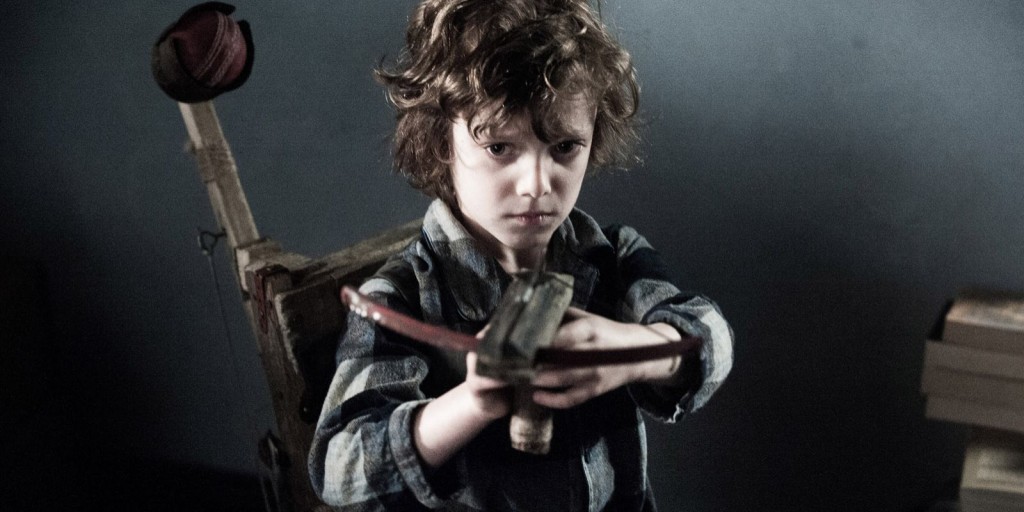
Now that we have established that Amelia is undergoing a severe bout of depression, we can say that the Babadook is the personification of her depression. This phase comes around every year, and she suffers through it each time, but over the years, all the despair has accumulated, and this year, she witnesses its monstrous form. It is also evident that the people close to her, like her sister Claire, have failed miserably at assessing her situation. As the story moves further, we see that Claire, and other friends of Amelia, distance themselves from her. This is the last thing a depressed person needs! While such behavior isn’t ideal, it is, still, a bitter truth of life. Their behavior towards Amelia and Sam, their exasperation, and failure to understand the root of their problems shows the negligence of the society towards people suffering from mental illness.
The Glass in The Soup
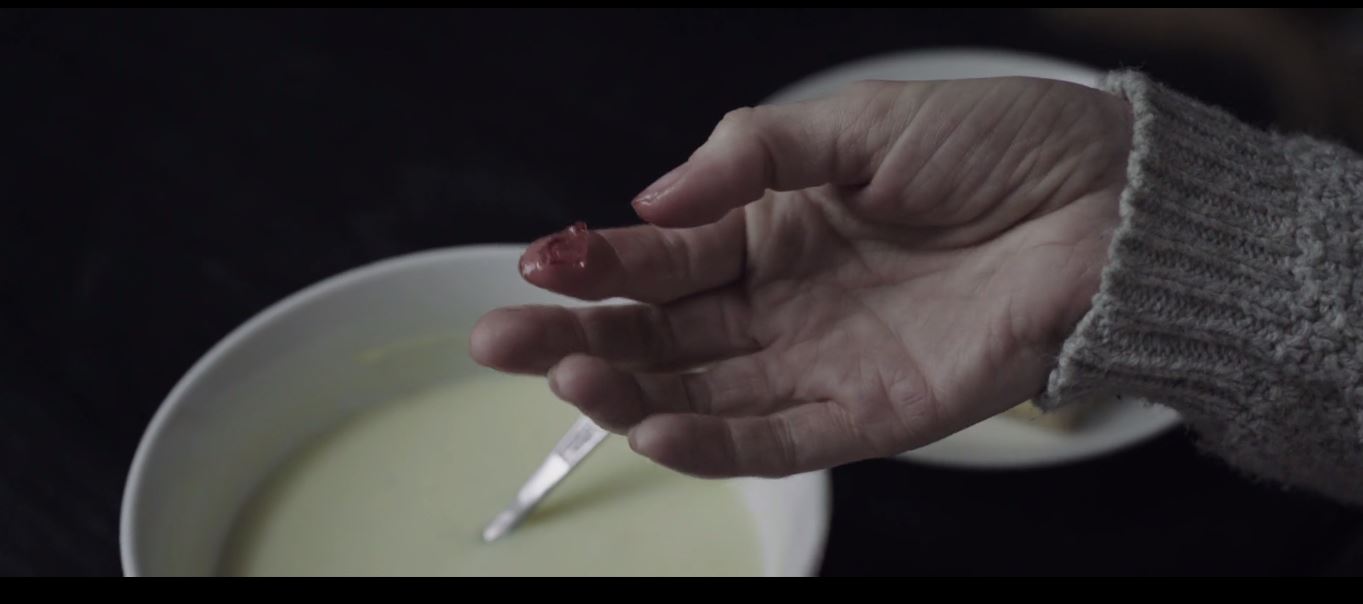
A line in the story says, “You start to change when I get in”. As depression sets in, the person no longer remains the same. And most of the times, even the depressed person doesn’t realize the changes that happen. The scene where Amelia finds the glass only in her soup and not Sam’s is the indication that the illness is hers. The broken glass is also shown when she revisits the accident. The grief doesn’t seem to leave her. In his defense, Sam says that ‘the Babadook did it’. It means that her depressed self is doing all of this.
Sam repeatedly tells her, “Don’t let him in.” This, possibly, refers to the negative and depressive feelings. Once they take root inside a person’s mind, they are hard to shake off. That’s why “you can’t get rid of the Babadook”. The line that, “the more you ignore its presence the stronger he will get,” might be an allegory to the fact that people suffering from depression don’t generally accept it in the beginning. They ignore it, and don’t acknowledge the problem and so it grows deeper.
Alternatively…
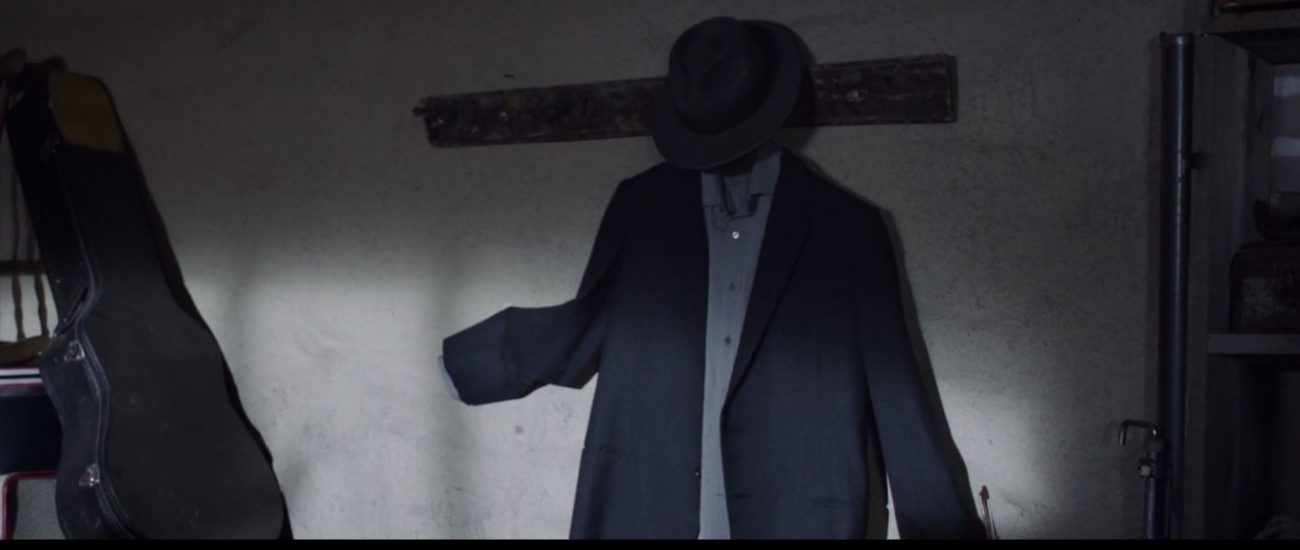
Some might say that the Babadook is her husband Oskar. It is his death anniversary, after all. He is the trigger of the whole situation. It is his loss that grieves Amelia. But the more you think about it, the more it corroborates with the depression theory. People who are depressed don’t generally accept the fact. They wear a façade to show the world that they are fine. Amelia does a similar thing with her friends and family. There is a smile on her face but an undeniable sadness in her eyes.
The other symptom is that depressed people don’t want to talk about the thing that troubles them. Just as, Amelia can’t talk about Oskar. Next thing, when the people around them try to reach out and help them, they tend to shut them out. For instance, Amelia shuts out her sister when she says that Amelia should move on now. She also shuts out Mrs. Roach who tries to comfort her and be there for her. When Sam tries to call Mrs. Roach for help, Amelia cuts the telephone wire and doesn’t let the helpful neighbor in.
What About the Book?
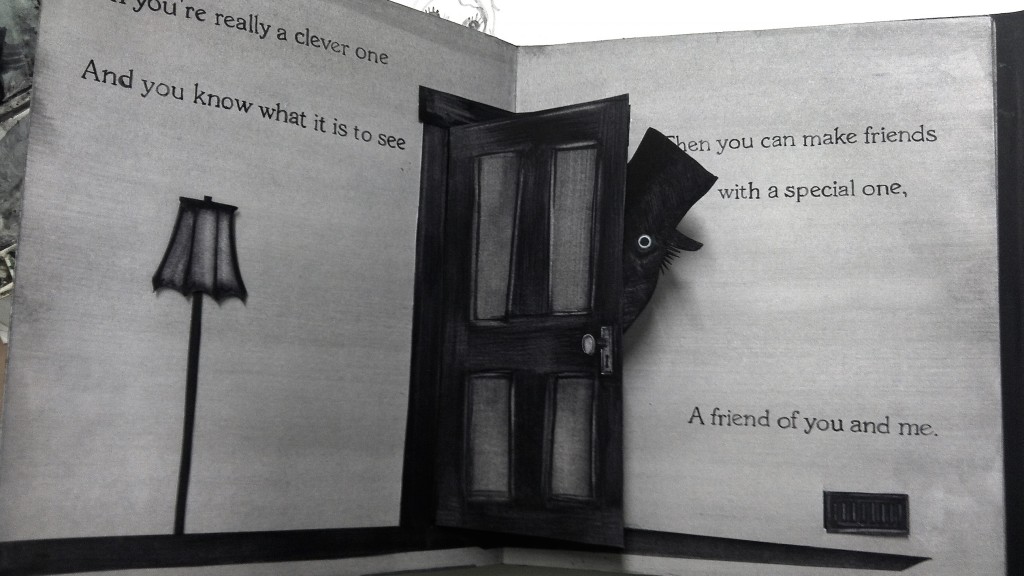
So, if it is her depression that is getting the best of her, what is going on with the book? Where did it come from? And what author creates such cut-out, custom-made horror books that terrify the bejesus out of people? It is likely that Amelia created the book. In the birthday party, Claire tells everyone that Amelia used to be a writer, where Amelia adds that she used to write ‘child’s stuff’. The Babadook was a children’s book!
When Oskar died, Amelia was left with a new-born baby and a whole lot of emotional baggage. It is likely that she made the book when Sam was little, to let out, and express her emotions. This would also clarify the part about how the book lands on her doorstep after she tore it to pieces. Well, she created the book, so she knows how to put it back together and add some new features to it. When she goes to the police station, there is charcoal on her hands. One would think that it is due to the burning. But wait, how many times have you burnt something and got your hands all messed up? The book had black material used to create illustrations, so the black hands could be due to that.
Now, you would think, who in their right mind would create a crafty book that shows the death of their dog and their kid? You are right, no one would do such a thing. But, Amelia is not of a sound mind. Also, we know that her relationship with Sam is complicated. She loves him because he is her son and all, but we also know that she holds some disdain in her heart about him, believing that he is responsible for her husband’s death.
What’s Up With the Cockroaches?
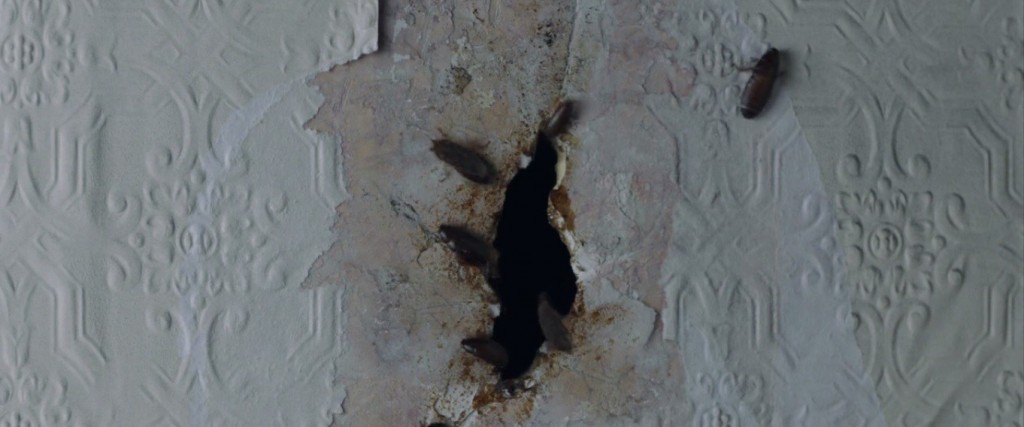
It is easy to believe that Amelia hasn’t been cleaning her house properly, so the infestation has spread through the walls. But this isn’t just it. The appearance of the cockroaches signifies a deeper meaning. It is because Amelia hasn’t been taking care of ‘herself’ that the infestation has spread throughout her ‘mind’. The fact that only she sees the cockroaches indicates that her mind is deteriorating.
Another route taken will suggest that the roaches from the wall, in fact, depict the people from the outside world who try to reach out and help. The two times that she sees roaches is the time people try to open up the situation to her. The man and woman from Social Services arriving at her home, and the man whose car she hits, try to open up that she has a kid, a responsibility and that she needs to get her act together. The lady that acts as a backbone and support for Amelia, and Sam, is Mrs. Roach (definitely a pun)! Sam asks his mother to go to her for help, but Amelia says she doesn’t need help! That is unacceptance. And that’s when her problems escalate.
How Did She Get Rid Of It?
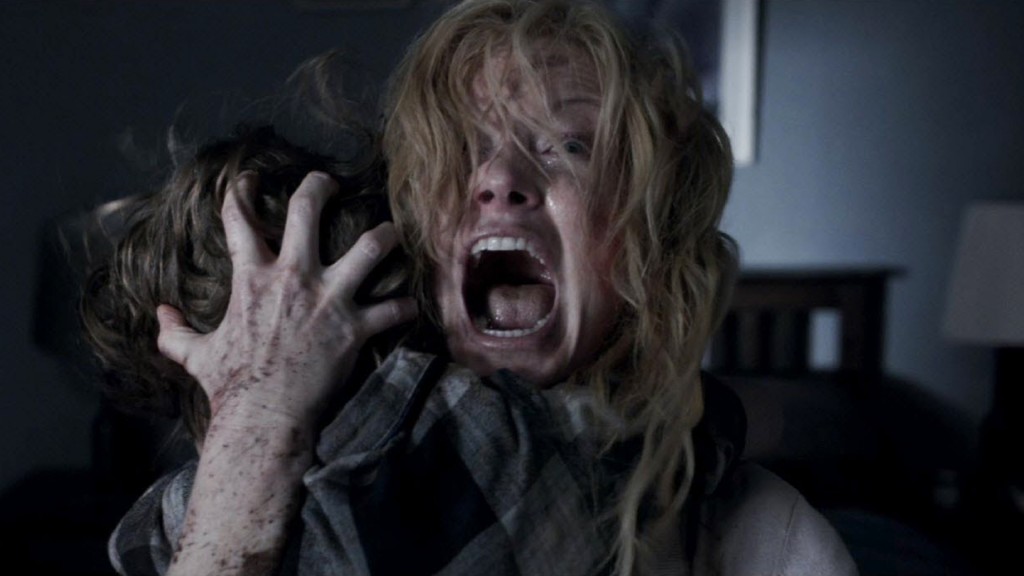
When the Babadook comes forward, arms open, to get her, Amelia screams, “this is my house”. Here, she is marking her territory, denoting that it is her body and her mind and that she is in control. So, that was it? All she had to do was say it? I guess so! To solve a problem, you have to begin by accepting that there is a problem. Throughout the film, Amelia keeps saying that she doesn’t need help, she only needs to sleep. But later, when the Babadook is in full possession of her, she tells Sam that she is sick. As the acceptance is done, the healing process initiates.
Not only does she accept her sickness, she also accepts Sam’s love. We see in the film, how she gets uncomfortable or pulls away when Sam tries to hug her or gets close to her. In the end, when she is strangling him, he tells her that he loves her, no matter what, and lovingly caresses her cheeks. This act of love provides further incentive to Amelia to fight her problems.
And What’s Wrong With Her Tooth?
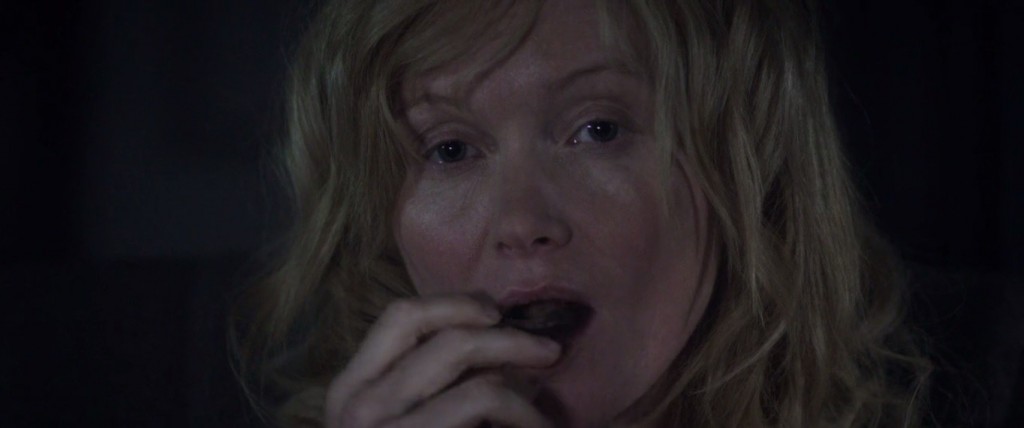
Her toothache provides a physicality to her illness. It could mean a lot of things. Different people react differently to anger, the most common form being clenching one’s teeth. To get a more materialistic perspective, we see that Amelia eats a lot of chocolates and ice-creams. If that won’t give her a cavity, then what will?
In a similar fashion, there are other extrapolations that can be made about various things in the film. Like the structure of the house, with the basement representing the subconscious, the deeply-seated foundations, where she keeps all the stuff of her husband. The ground floor represents the part where she mostly dwells, doing mindless work, kind of like medulla oblongata. And the first floor would be her brain, the section that provides her control. The Babadook drives her away from her bedroom, that is located on the first floor. In the end, it is in the bedroom where she defeats the monster. Implying that she has gained back control.
If It Is About Amelia’s grief, Then Why Does Sam See It?
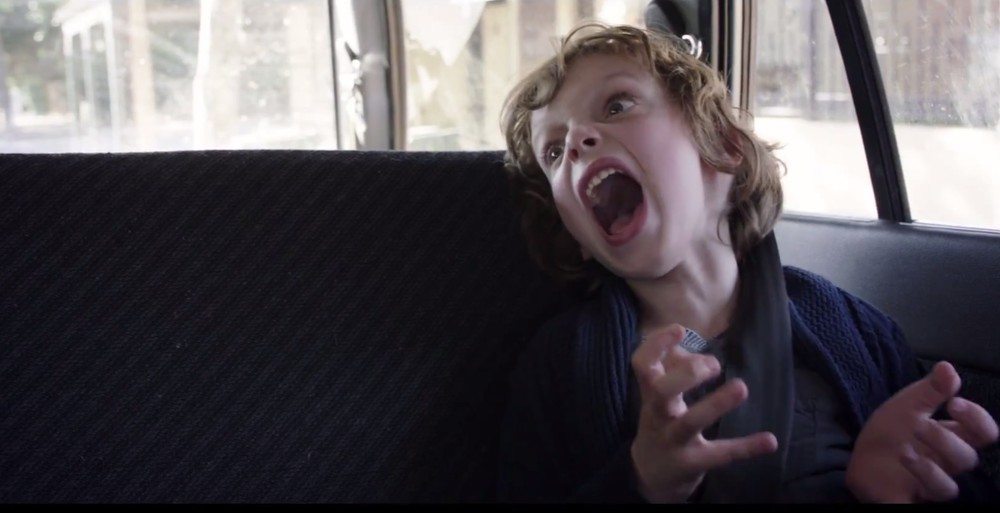
The fact that he begins to acknowledge their condition answers this question! Or maybe that he has seen his mother falling into depression before. Because it is that time of the year, he knows how his mother behaves. So, he knows what’s coming, and he begins seeing the Babadook in the early stages. Also, it is shown in the film that both the mother and son haven’t slept in weeks, so it could very possibly be the part of a hallucination for them, due to insomnia. This explains why both of them can see it.
“Bring me the boy”- this meant that Amelia’s continued state of mind will make her hurt Sam. That it continuously refers to Sam as ‘the boy’ and not by his name says that her mental state can make her impassive towards her son. It does happen because she tells him that she hates him and blames him for his father’s death, that she would “want to smash his head against the wall”. The fact that he realizes that it is not his mother speaking, means that he is the only one who actually understands what’s going on with her. He doesn’t know how to call out her depression and so he names it the Babadook.
He repeatedly tells his mother that they have to protect each other, from such a state of mind, that he doesn’t want her to die. This could be an indication of the fact that people suffering from depression are likely to develop suicidal tendencies.
The Worms In the End?
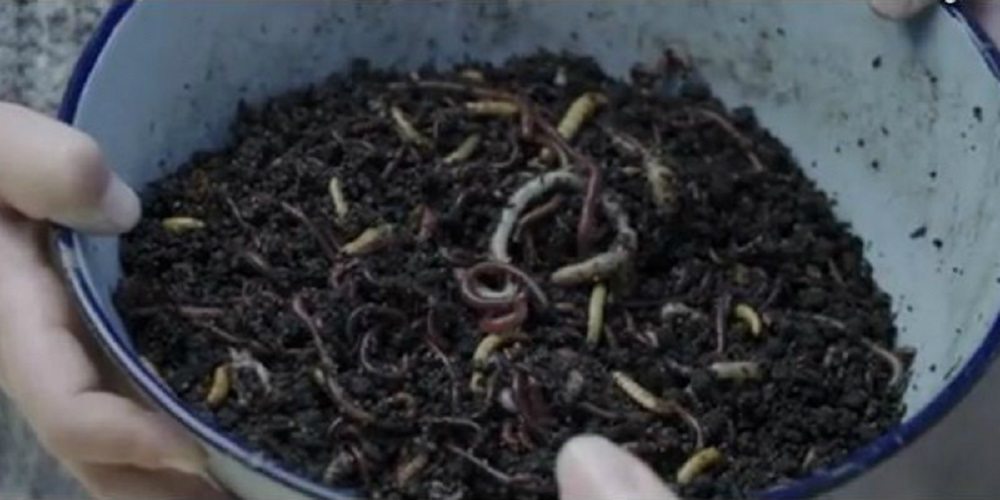
Controlling the Babadook means that she is in control of the darkness inside of her, but she can’t get ‘rid of it’. It will always remain a part of her. Her feeding the worms to the Babadook means that she sometimes tends to her grief. She can’t forget her husband and the grief will never leave her. But that she can come out of the basement and not lose her shit over her loss, states that she is better now. In the end, she can even talk about her husband’s death to people, without breaking down and without being offended, unlike other instances in the movie.
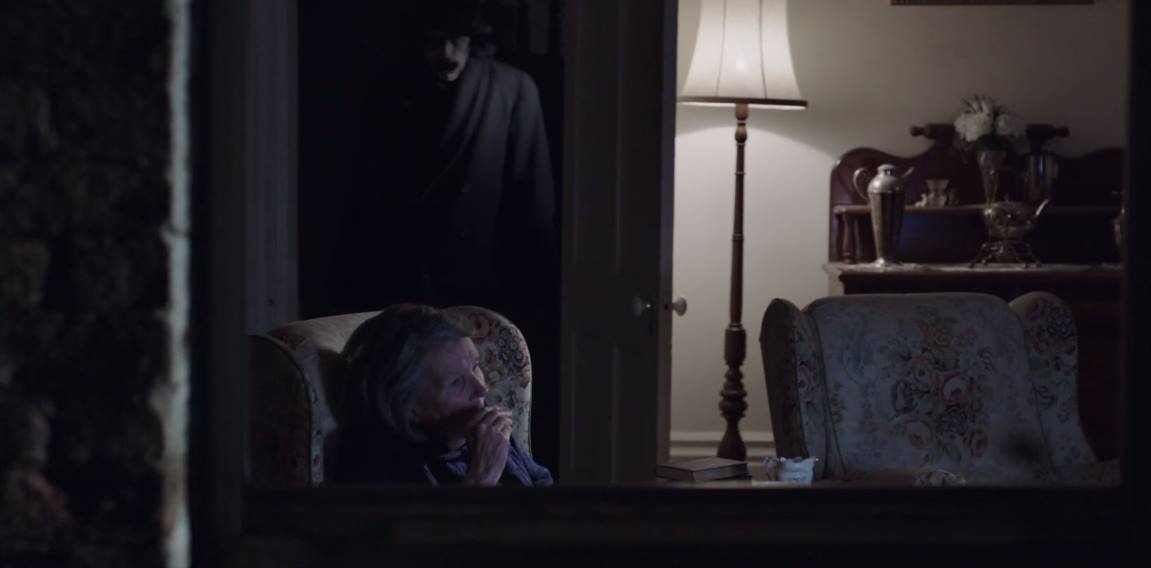
The entity isn’t going away, ever. In a scene, Amelia sees the Babadook lingering behind Mrs. Roach. This signifies that even Mrs. Roach has her own demons in the closet. And perhaps one day, it will take her over. But she, too, is keeping it at bay for as long as she can. Hence, no one is really free of the Babadook. You just have to be able to dominate it.
When Amelia comes out of the basement, Sam asks “how was it this time?” She replies, “better”. This means that she is in a better mental condition now. He asks if he will get to meet him, she says when he is older. This suggests that depression and mental illness begin taking shape as the innocence of the childhood leaves. She knows that eventually, Sam will come to understand what exactly it all means. But for now, she wants to keep him away from it.
Or…
There is also a possibility that she is a drug addict. No, it’s not a far-fetched theory. Pay attention to her disheveled appearance.
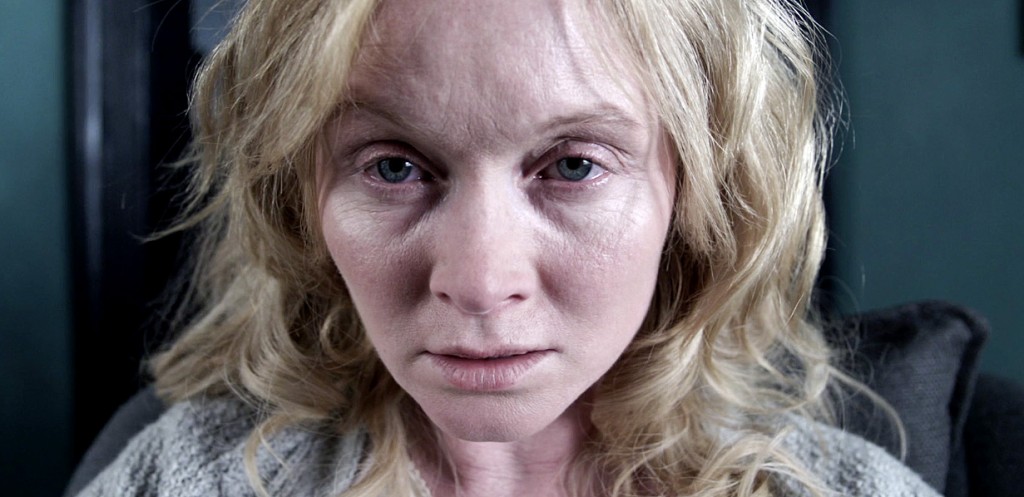
She is suffering from insomnia, another common symptom. She is getting more and more violent (can’t dispute that). And, she specifically asks the doctor to prescribe her with some drugs. Now, what mother would want to sedate her son. We know Sam’s trouble. But this much? So, if she really is a drug addict, then it is a possibility that she abuses (physically, not sexually) Sam. This time he decides to fight back. Hence, the weapons!
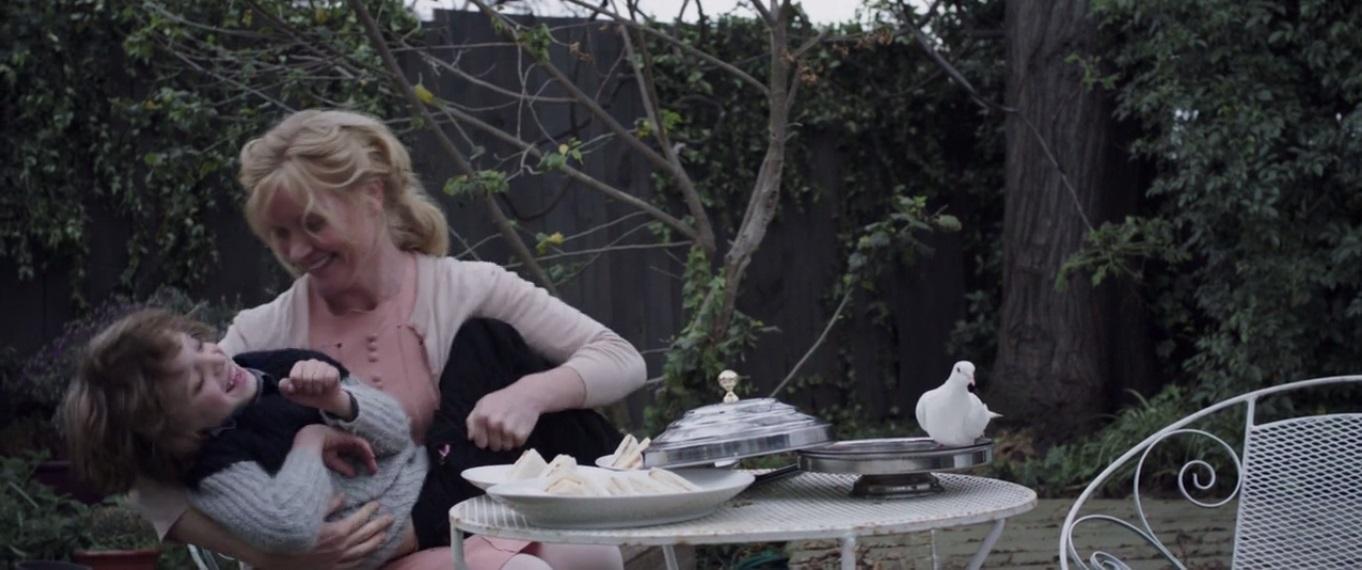
So, the Babadook and all other things are just a trick of her mind. And the ending? Well, it can be assumed that she might have killed Sam. Unable to accept the reality, she forced her mind to believe that every problem was solved, she controlled her addiction (the monster in the basement), and all is well. And perhaps this also explains how Sam was able to pull off that magic trick (bird from the hat) in the end. I mean, doesn’t it take years to master the craft? How does a six (or seven) year old boy do that?
Read More: Identity, Explained

